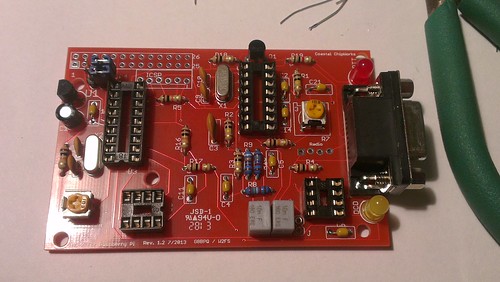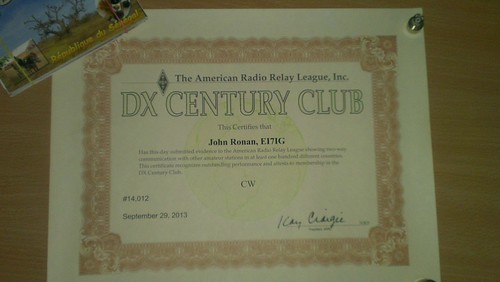I’m slowly working towards doing some experiments with mesh networking (OLSR) and Icom ID-1 D-star Radios in Digital Data mode. I’ve been wondering what coverage I would (should) see from a vehicle, back to one of the locations where I have an ID-1 in a fixed location (thanks EI3JB/EI8JA).
I got back from a trip today, grabbed an ID-1, an Omni Antenna, Laptop, a short bash script I wrote to ping and record replies along with a GPS position, and an old GPS-18 puck. All the nodes have fixed IP addresses so the script is quite simple, ping host A, if A replies within 2 seconds, record the next position output from the GPS, try the same with host B, loop forever, nothing fancy or terribly accurate.
As I only have two nodes set-up, and without much preparation (shutting down chatty applications), I persuaded SWMBO to do a short (war)drive, while I kept an eye on the laptop.
This first picture below shows (the red dots) the coverage from Nicky, EI3JB’s place (roughly at the 8 in the R708 closest to the top). Note the few packets recorded in Tramore, shortly after I left my own place.
 The second is obviously from my place, as it is much more centred on Tramore.
The second is obviously from my place, as it is much more centred on Tramore.
 Nothing really ground-breaking in either picture, but useful to help visualise potential coverage nonetheless. There is a huge black-spot on the section of road just leaving Tramore, as far as Ballykinsella (L4061 on the map). This is of no surprise, as it is a tough location for 430Mhz signals to get out of. What was surprising though is the packets received from EI3JBs location out in Tramore.
Nothing really ground-breaking in either picture, but useful to help visualise potential coverage nonetheless. There is a huge black-spot on the section of road just leaving Tramore, as far as Ballykinsella (L4061 on the map). This is of no surprise, as it is a tough location for 430Mhz signals to get out of. What was surprising though is the packets received from EI3JBs location out in Tramore.
Next steps are to get EI8JA up and running, and complete a more thorough survey.
Now though, it is time for a beer!









